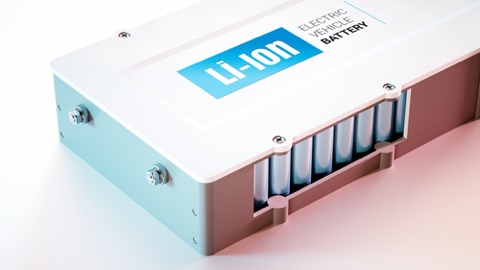
Researchers at the University of Maryland, the U.S. Army Research Lab, and Brookhaven National Laboratory have developed a new battery cathode material that is expected to triple the energy density of lithium-ion batteries. The ability to store more lithium ions in the battery’s cathode leads to increased energy density which is crucial to building better batteries for electric cars and other applications. The higher the energy density, the smaller and lighter the battery pack can be which translates into increased mileage and lower costs of operation.
“Lithium-ion batteries consist of an anode and a cathode,” said Xiulin Fan, a scientist at UMD and one of the lead authors of the paper. “Compared to the large capacity of the commercial graphite anodes used in lithium-ion batteries, the capacity of the cathodes is far more limited. Cathode materials are always the bottleneck for further improving the energy density of lithium-ion batteries.”
Working with iron trifluoride (FeF3), the researchers added cobalt and oxygen to iron-trifluoride nano rods to make the material absorb and release lithium ions more quickly and readily. Unlike conventional silicon cathodes, which absorb lithium ions without changing their structure, iron trifluoride converts into iron and lithium fluoride as it absorbs the lithium ions. This has led to problems with recharge-ability and low power production. The oxygen and cobalt coating on the nano-tubes better maintains the original structure of the iron trifluoride and makes the reaction easier to reverse to recharge the battery.
“The materials normally used in lithium-ion batteries are based on intercalation chemistry,” said Enyuan Hu, a chemist at Brookhaven and one of the lead authors of the paper. “This type of chemical reaction is very efficient; however, it only transfers a single electron, so the cathode capacity is limited. Some compounds like FeF3 are capable of transferring multiple electrons through a more complex reaction mechanism, called a conversion reaction.”
